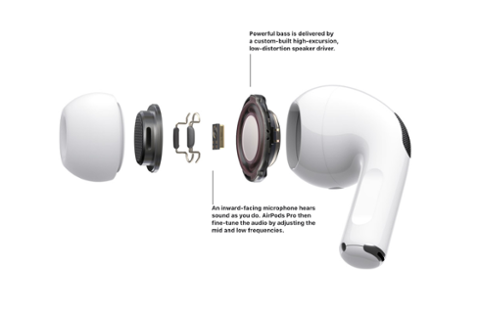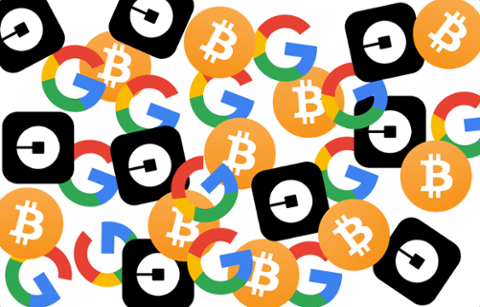You did it! You made it to the weekend! Before you log off your machine and spend the next 48 hours playing “Death Stranding” (it’s weird… really weird), let’s check out some of the tech news this week you might have missed.
Google Cardboard Sent Off to the (Open Source) Farm
Back in 2014, a bunch of Google engineers came up with a fascinating concept: Why not build a virtual reality (VR) headset out of literally the cheapest materials possible? The result was Google Cardboard, which for a shining moment seemed like it would truly bring VR to the masses. You didn’t even need to buy one of the cardboard “devices” from Google; with a set of easy-to-follow instructions, you could build one yourself.
However, Google Cardboard had a drawback that ultimately doomed it as a product. Since it was only a cardboard holder for your smartphone (along with a pair of lenses that made the content on your smartphone’s screen seem 3D and immersive), there was a lack of control; you could watch video, but couldn’t play games or really engage with a VR app.
Nonetheless, Google managed to ship 15 million Cardboard units, introducing many folks to VR for the first time. And now, even as the very concept of smartphone-based VR seems to be fading away, Google has released Cardboard’s software to the open-source community. If you’re interested, check out the associated GitHub repo, as well as the documentation.
“We're releasing libraries for developers to build their Cardboard apps for iOS and Android and render VR experiences on Cardboard viewers,” Google wrote in an associated blog posting. “The open source project provides APIs for head tracking, lens distortion rendering and input handling. We’ve also included an Android QR code library, so that apps can pair any Cardboard viewer without depending on the Cardboard app.”
Google also promised that it would continue to contribute to the project with new features, “including an SDK package for Unity.” In other words, although Cardboard was an interesting experiment, keeping it alive is now the job of the broader tech community.
Bill Gates: Microsoft Could Have Whacked Android
In the “hope springs eternal” category, Bill Gates is insisting that Microsoft’s smartphone operating systems could have eventually challenged Android for mobile-device supremacy.
“There’s no doubt that the antitrust lawsuit was bad for Microsoft, and we would have been more focused on creating the phone operating system and so instead of using Android today you would be using Windows Mobile,” Gates told an audience at the New York Times DealBook Conference (hat tip to The Verge for the coverage). “If it hadn’t been for the antitrust case... we were so close, I was just too distracted. I screwed that up because of the distraction.”
It’s a weird revisionist take on history. Anyone who covered mobile during the crucial years bracketing Apple’s launch of the iPhone will tell you that Windows Mobile had a significant share of the phone market circa 2007. However, Microsoft (then under the command of CEO Steve Ballmer, not Gates) failed to move quickly enough to produce an iOS-like operating system. By the time Windows Phone rolled out, in 2010, both iOS and Android had a lock on the market.
In other words, Microsoft was caught off-guard by the introduction of iOS (just like the rest of the tech industry) and failed to come up with a suitable competitor quickly enough, despite its sizable presence in mobile at the time. The company’s failure had less to do with “antitrust” and more with Ballmer not recognizing the Apple bulldozer about to smash through his company’s mobile efforts. Remember this?
Within a year, Ballmer wasn’t laughing.
Another Week, Another A.I. Attempt to Wreck the World
Earlier this year, OpenAI, the kinda-non-profit entity (it’s complicated) set up to promote ethical A.I., said that it had developed an A.I. platform capable of generating “coherent paragraphs of text.” This “large-scale unsupervised language model” was a huge danger, OpenAI added, because it could end up used to create “fake news.”
Given that potential danger, the organization declined to release this horror upon the world—until now. In an abrupt (and given its previously freaked-out stance, surprising) reversal, OpenAI released the full version of this text-generation platform. You can even try it out on TalkToTransformer.com.
There are a couple of interesting things to unpack here. First, why did OpenAI decide to release this supposedly dangerous thing to the world, despite its potential for misuse? The organization says it’s seen no “evidence” of malfeasance yet, so maybe it assumes that only researchers will end up using the platform. Maybe someone figured that having the code in the wild would end up a safer move than keeping it a secret, because it would give more people to opportunity to analyze its workings.
And here’s the other thing: Although it might evolve, the tool isn’t fantastic. Test it for yourself; it’s clear within a paragraph or two that a machine is churning out text, and can’t really recognize things like context or excessive repetition. Nobody’s going to create a convincing “fake news” article with this thing quite yet.
Have a great weekend, everyone!



